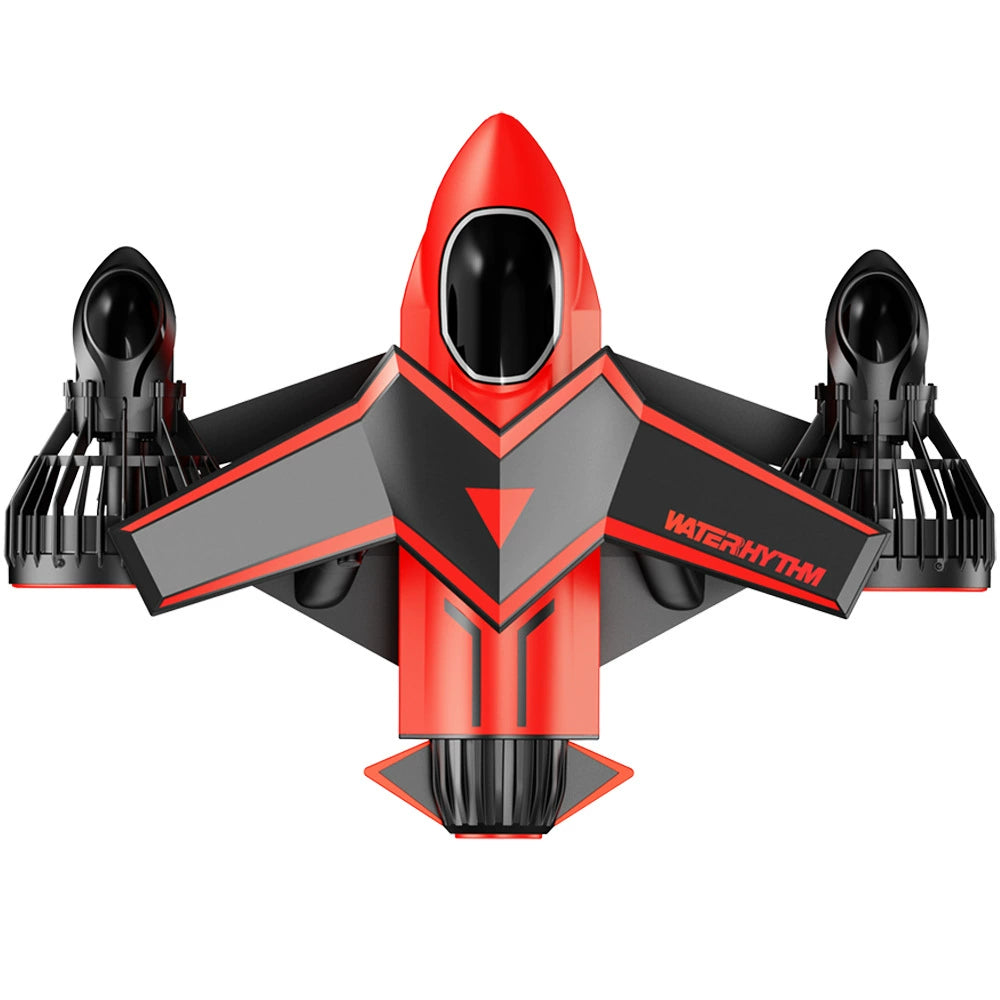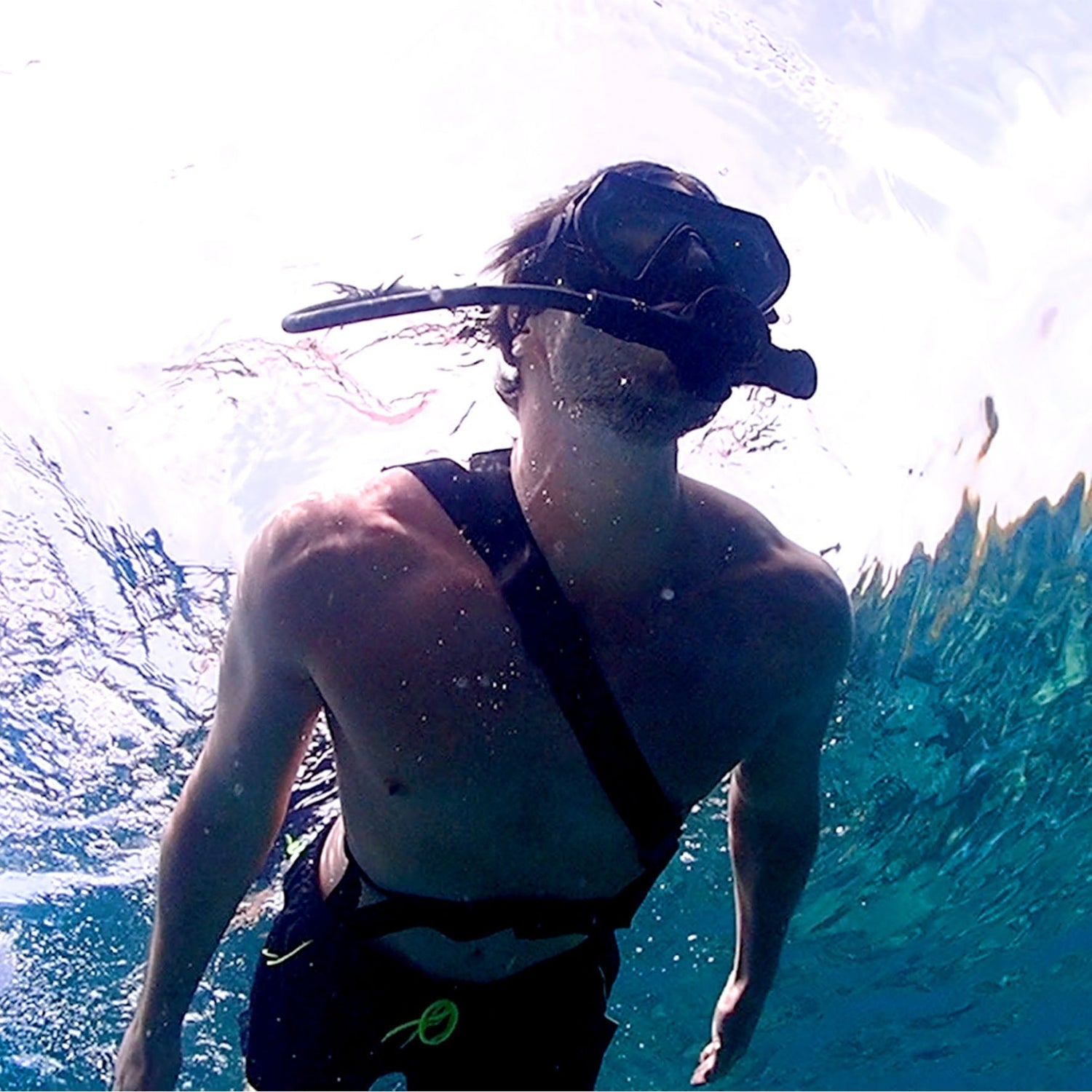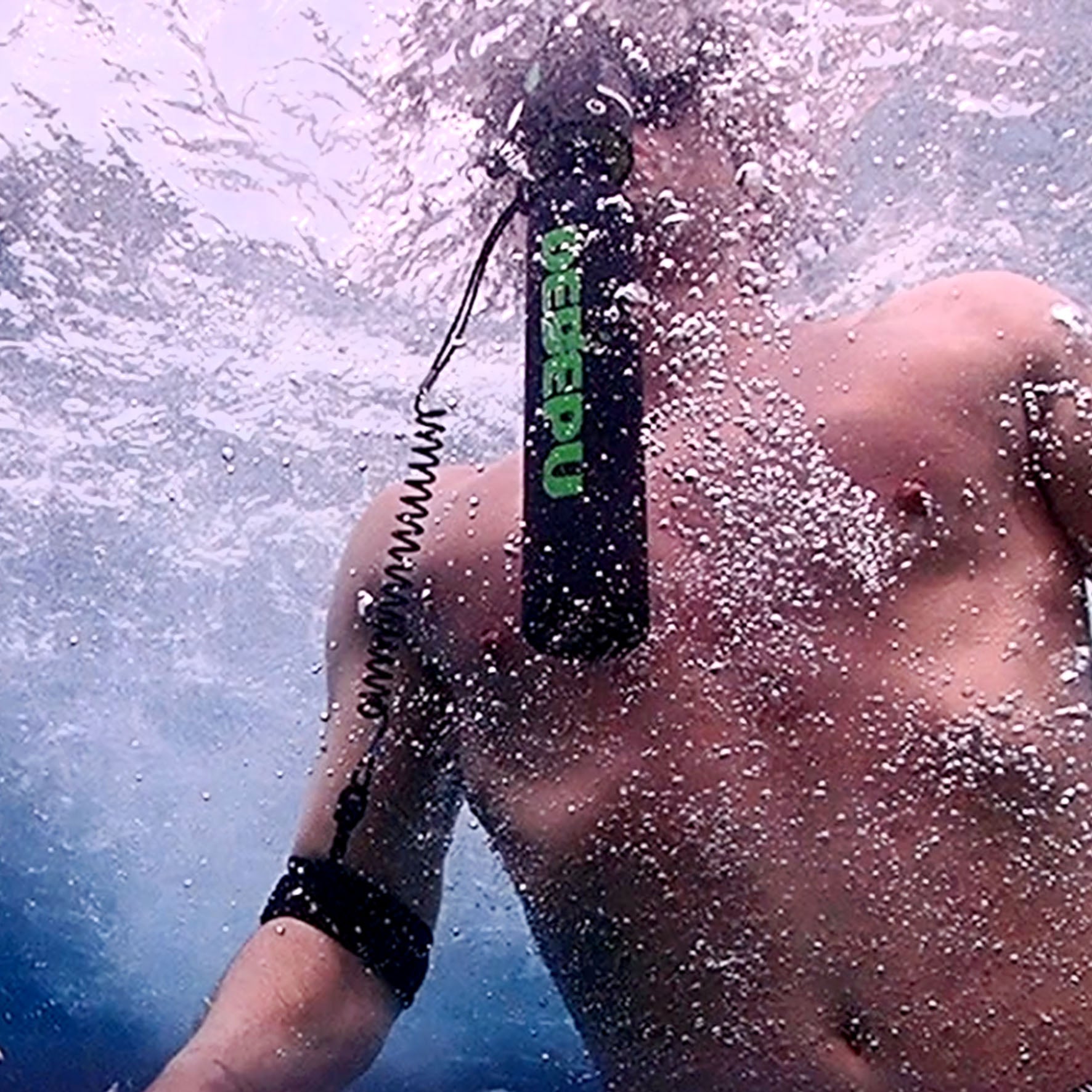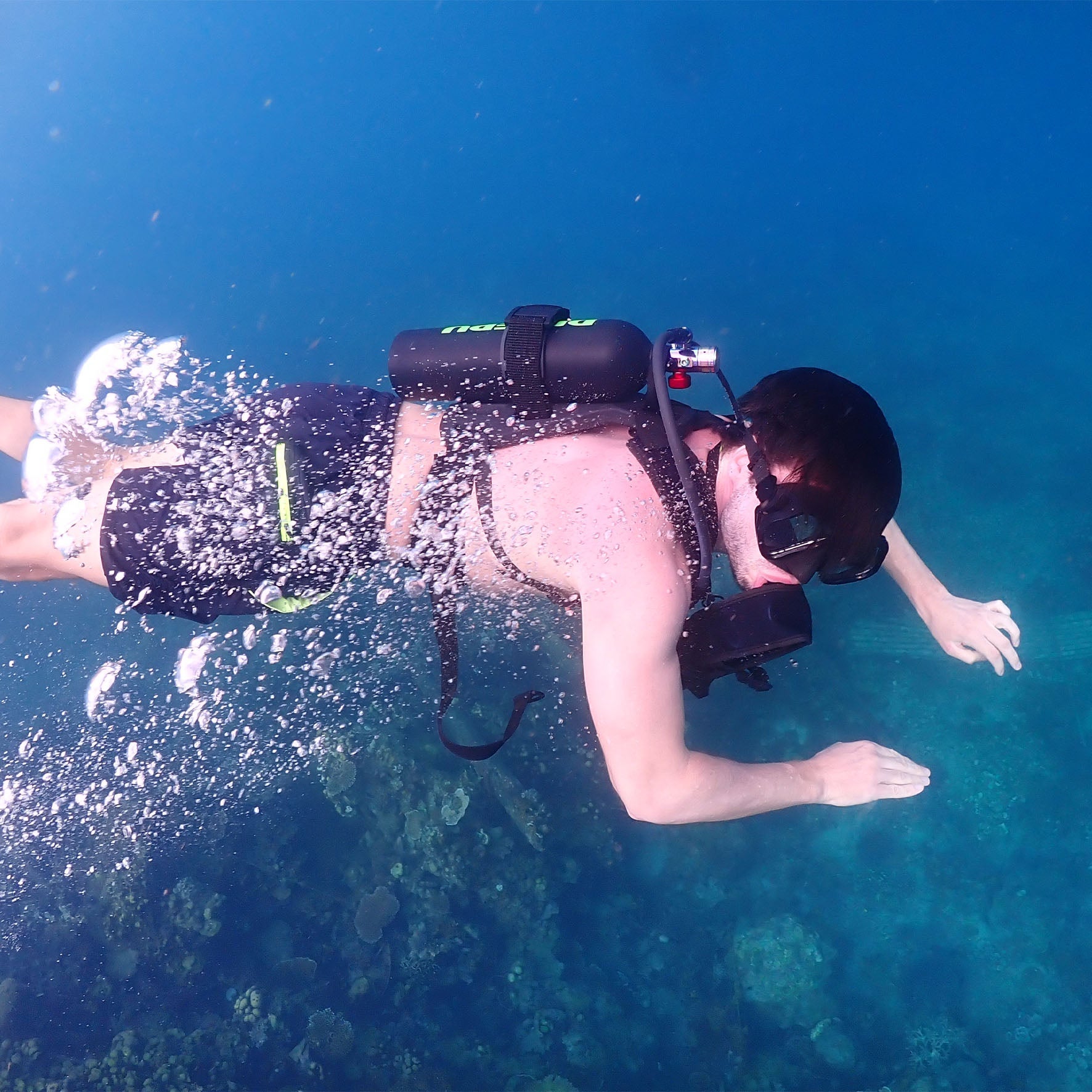Wondering how long a 1L scuba tank lasts? The answer depends on depth, breathing rate, and tank pressure. For example, at 10 meters (33 feet), an average diver breathing 15-20 liters per minute might get only 2-3 minutes of air from a 1L tank at 200 bar. In shallow water (3-5 meters), it could stretch to 5-8 minutes.
What Affects a 1L Tank’s Air Time?
A 1L scuba tank is tiny compared to standard 12L tanks, but it’s useful for short dives or emergency backup. Its air supply depends on three main things: depth, breathing rate, and tank pressure.
Depth: At 10 meters (33 feet), pressure doubles, so you consume air twice as fast as at the surface. A 1L tank at 200 bar holds 200L of air—but at 10m, that’s effectively just 100L of usable air.
Breathing Rate: Most divers use 15-25L per minute at rest. If you breathe 20L/min, a 200L tank lasts 10 minutes at the surface—but only 5 minutes at 10m.
Tank Pressure: A full 1L tank at 200 bar has 200L of air. If it’s only filled to 100 bar, you get half the air (100L), cutting dive time significantly.
1. Depth: The Biggest Air Killer
Deeper = faster air consumption. Here’s why:
Surface (0m): 1L of tank air = 1L of breathable air.
10m (33ft): Pressure is 2x, so 1L of tank air = 0.5L of breathable air.
20m (66ft): Pressure is 3x, so 1L of tank air = 0.33L of breathable air.
Example:
A 200L tank lasts:
20 minutes at the surface (breathing 10L/min).
10 minutes at 10m (same breathing rate).
6-7 minutes at 20m.
Key Takeaway: If you need longer air time, stay shallow.
2. Breathing Rate: Control It to Save Air
Your air use varies wildly based on activity:
Resting (calm diver): 10-15L/min
Moderate swimming: 20-25L/min
Stressed or working hard: 30-40L/min
Example:
A 200L tank with 20L/min breathing:
10 minutes at the surface.
5 minutes at 10m.
If you slow breathing to 12L/min:
16 minutes at the surface.
8 minutes at 10m.
Key Takeaway: Relax, move slowly, and breathe deeply to extend dive time.
3. Tank Pressure: The Starting Point Matters
A 1L tank at 200 bar = 200L of air. But if underfilled, dive time drops fast.
Full tank (200 bar): 200L → 10 min at surface (20L/min).
Half-full (100 bar): 100L → 5 min at surface.
Low (50 bar): 50L → 2.5 min at surface.
Key Takeaway: Always check your tank’s pressure before diving. A 1L tank is only practical for very short dives unless you’re extremely efficient.
Thought
A 1L tank is not for long dives—it’s best for:
Emergency backup (pony bottle).
Surface-supplied snorkeling.
Very short shallow dives (1-3 min).
If you need more air, go for a 5L+ tank. But if you’re stuck with 1L, stay shallow, breathe slow, and monitor pressure closely.

Calculating Air Use
A 1L tank at 200 bar holds 200L of compressed air.
At the surface (0m), you breathe air at 1:1 pressure—so 200L = 200L of usable air.
At 10m (33ft), pressure doubles, so 200L in the tank = 100L of actual breathable air.
If you breathe 20L per minute, a full tank gives you:
10 minutes at the surface (200L ÷ 20L/min).
5 minutes at 10m (100L ÷ 20L/min).
1. The Basic Formula: Tank Capacity ÷ (Breathing Rate × Pressure Factor)
To estimate air time, use this simple equation:
Dive Time (min) = (Tank Volume × Pressure) ÷ (Breathing Rate × Absolute Pressure)
Tank Volume: 1L (or 1000mL).
Pressure: 200 bar (full tank) → 200L total air.
Breathing Rate: 15-25L/min (average diver).
Absolute Pressure: 1.0 at surface, 2.0 at 10m, 3.0 at 20m.
Example Calculation (Surface Dive):
Tank: 1L × 200 bar = 200L.
Breathing: 20L/min.
Pressure factor: 1.0 (surface).
Dive Time = 200L ÷ (20L/min × 1.0) = 10 minutes.
At 10m Depth:
Same tank (200L), but pressure factor = 2.0.
Usable air = 200L ÷ 2 = 100L.
Dive Time = 100L ÷ 20L/min = 5 minutes.
2. Real-World Adjustments: What Changes the Numbers?
Theoretical calculations don’t always match reality. Here’s what affects real dive time:
Breathing Efficiency:
Calm diver: 12-15L/min → Longer air supply.
Stressed diver: 30L/min+ → Cuts dive time in half.
Tank Fill Accuracy:
A "200 bar" fill might actually be 190-210 bar (±5%).
A 10% underfill means 180L instead of 200L—losing 1-2 minutes.
Air Reserve Rule:
Never plan to use 100% of tank air.
Always surface with at least 50 bar (25% reserve).
So 200L becomes 150L usable at surface (7.5 min instead of 10).
3. Quick Reference: Estimated Dive Times for 1L Tank
| Depth | Breathing Rate (L/min) | Usable Air (L) | Estimated Time |
|---|---|---|---|
| 0m | 15 | 200 | 13.3 min |
| 0m | 20 | 200 | 10 min |
| 10m | 20 | 100 | 5 min |
| 20m | 25 | ~67 | 2.7 min |
Key Takeaways:
Shallow dives (<5m) give 5-10+ minutes with a 1L tank.
Beyond 10m, air runs out very fast—often <5 minutes.
Breathing control is the easiest way to extend dive time.
Thought
A 1L tank is only practical for:
Very short dives (under 5 minutes).
Emergency backup (if you stay shallow).
Testing gear in a pool.
If you need more air, use a bigger tank (5L+) or stay above 5m depth. But if you’re stuck with 1L, do the math beforehand so you don’t run out unexpectedly.
How Depth Changes Air Consumption
At 5m (16ft), a 1L tank at 200 bar gives ~7 minutes of air (breathing 20L/min).
At 20m (66ft), the same tank lasts under 3 minutes—less than half the time.
For every 10m (33ft) deeper, you lose ~50% of your usable air due to pressure.
1. Shallow Dives (0-5m / 0-16ft): Maximizing Air Efficiency
Best for extending dive time with a small tank.
Pressure factor: 1.0-1.5x (minimal air loss).
Air consumption: Near-surface rates.
Example (1L tank, 200 bar, 20L/min breathing):
0m: 200L ÷ 20L/min = 10 minutes.
5m: 200L ÷ (20L/min × 1.5) = ~6.7 minutes.
Real-world adjustment:
Calm divers (12-15L/min) get 10-13 minutes at 5m.
Stressed divers (30L/min) drop to ~4.5 minutes.
Best uses for 1L tanks:
Snorkeling with short dives (2-3m depth).
Pool training (constant 1-2m depth).
Emergency surface swimming (minimal depth).
2. Mid-Depth Dives (10-15m / 33-49ft): The Turning Point
Where air starts disappearing fast.
Pressure factor: 2.0-2.5x.
Air consumption: Double the surface rate.
Example (same tank/breathing rate):
10m: 200L ÷ (20L/min × 2.0) = 5 minutes.
15m: 200L ÷ (20L/min × 2.5) = 4 minutes.
Critical factor:
A 5m change (10m → 15m) cuts air time by 20%.
Ascending to 5m from 15m triples remaining air time.
When 1L tanks fail here:
Dives >5 minutes require strict depth control.
Any task loading (e.g., photography) spikes air use to 25-30L/min → ~3 minutes total.
3. Deep Dives (20m+ / 66ft+): Why 1L Tanks Aren’t Practical
At this point, air lasts shorter than most safety stops.
Pressure factor: 3.0x at 20m, 4.0x at 30m.
Example:
20m: 200L ÷ (20L/min × 3.0) = ~3.3 minutes.
30m: 200L ÷ (20L/min × 4.0) = 2.5 minutes.
Reality check:
Descent/ascent takes ~1-2 minutes → Only ~1 minute of bottom time at 30m.
Safety stop (5m for 3 minutes): Impossible without reserve air.
Why divers avoid 1L tanks deep:
No margin for error (equipment issues, currents).
Violates standard safety protocols (reserve air rules).
4. Key Takeaways: Depth vs. Air Time
| Depth | Pressure Factor | 1L Tank Duration (20L/min) | Safe Practical Use? |
|---|---|---|---|
| 0-5m | 1.0-1.5x | 6-10 minutes | ✅ Yes (best case) |
| 10m | 2.0x | 5 minutes | ⚠️ Risky (short dives only) |
| 20m | 3.0x | ~3 minutes | ❌ No (unsafe) |
Actionable tips:
For 1L tanks, stay <10m—ideally <5m for meaningful dive time.
Monitor depth closely: A 2-3m change can add/subtract 1-2 minutes.
Always surface with reserve (at least 50 bar in the tank).
Tips to Make Your 1L Tank Last Longer
A 1L scuba tank doesn’t give you much air—200L max at 200 bar. At 10m depth, that’s just 100L usable, lasting ~5 minutes for an average diver.
Slow your breathing rate from 20L/min to 12L/min → +40% more dive time (7 min instead of 5 min at 10m).
Reduce movement → Cuts air use by 15-25%.
Stay shallow → Every 2m (6.5ft) deeper costs ~1 extra minute of air.
1. Optimize Your Breathing (The Biggest Saver)
Breathing control = 30-50% longer dives.
Normal rate: 20L/min → 5 min at 10m.
Trained slow rate: 12L/min → 8.3 min at 10m (+66% time).
How to improve:
Breathe deeply & slowly (aim for 6-8 breaths per minute vs. typical 10-12).
Exhale fully—incomplete exhalation wastes 10-15% of each breath.
Avoid breath-holding—it increases CO₂, making you breathe faster later.
Pro tip: Practice dry breathing drills (e.g., 4-sec inhale, 6-sec exhale) to build efficiency.
2. Minimize Movement (Drag Kills Air Fast)
Swimming effort directly impacts air use:
Gentle finning: 15L/min consumption.
Moderate swimming: 20-25L/min.
Hard kicking/currents: 30L/min+ → Cuts dive time in half.
Ways to reduce effort:
Streamline gear—remove dangling accessories adding drag.
Use slow, wide fin strokes (better propulsion per kick).
Drift when possible—let currents carry you instead of fighting them.
Data point: A 10% reduction in speed can save 20% air due to lower drag.
3. Stay Shallow (Depth = Exponential Air Loss)
Every meter deeper = less time:
| Depth | Pressure Factor | 1L Tank Time (20L/min) |
|---|---|---|
| 3m | 1.3x | 7.7 min |
| 5m | 1.5x | 6.7 min |
| 10m | 2.0x | 5 min |
Tactics:
Plan dives at 3-5m instead of 10m → +2-3 minutes of air.
Avoid descending unless necessary—hover slightly above your target.
Ascend early for safety stops—saves air vs. rushing later.
4. Gear Tweaks (Small Changes = Big Savings)
Equipment choices affect efficiency:
Regulator performance: A high-efficiency reg saves 5-10% air vs. an older model.
Tank material: Lightweight aluminum reduces buoyancy shifts → Less effort adjusting.
Exposure suit: Thicker wetsuits increase drag → +10-15% air use in cold water.
Pro move: Test gear in a pool first to spot air-wasting issues.
5. Mindset Matters (Stress = Air Killer)
Panic or task-loading spikes consumption:
Calm diver: 12-15L/min.
Stressed diver: 25-40L/min → 2-3x faster air drain.
How to stay relaxed:
Plan simple dives—no complex navigation with a 1L tank.
Check pressure gauge often—every 30 seconds to avoid surprises.
Abort early if something feels off—better to surface with air left.
Quick Reference: Air-Saving Hacks
| Technique | Air Savings | Effect on 10m Dive (20L/min → ?) |
|---|---|---|
| Slow breathing (20→12L/min) | 40% | 5 min → 8.3 min |
| Reduce movement (20→15L/min) | 25% | 5 min → 6.7 min |
| Stay at 5m vs. 10m | 25% | 5 min → 6.7 min |
| Streamline gear | 10-15% | 5 min → 5.5 min |
Thought
A 1L tank is limited, but smart habits can give you 30-70% more time. Prioritize:
Breathe slower (biggest gain).
Move less (easy wins).
Stay shallow (depth is costly).
For dives >5 minutes, upgrade to a 5L+ tank. But if you’re stuck with 1L, every saved liter counts.

Comparing 1L to Larger Tanks
A 1L scuba tank holds 200L of air at 200 bar, giving just 5-10 minutes at shallow depths—barely enough for a quick dip. Compare that to:
5L tank (1000L): 25-50 min at 5m
12L tank (2400L): 60-120 min at 5m
That’s why 95% of recreational divers use 10-12L tanks. But 1L tanks aren’t useless—they excel in specific niche cases. Here’s the full breakdown.
1. Air Capacity: Why Size Matters
A 1L tank is like a motorcycle gas tank—lightweight but impractical for long trips. Here’s how it stacks up against standard tanks:
At the surface (0m):
1L tank: ~10 minutes (breathing 20L/min)
5L tank: ~50 minutes
12L tank: ~120 minutes
At 10m depth:
1L tank: ~5 minutes (pressure halves usable air)
5L tank: ~25 minutes
12L tank: ~60 minutes
Key Takeaway: A 5L tank gives 5x more dive time than 1L, while a 12L tank lasts 12x longer. Unless you’re doing ultra-shallow dives, bigger tanks are the only practical choice.
2. Why Divers Rarely Use 1L Tanks
Five Dealbreakers
Time Crunch
At 15m, a 1L tank lasts under 4 minutes—barely enough to descend, look around, and ascend. Most dives need 20+ minutes to be worthwhile.
No Safety Margin
Divers are trained to surface with 50 bar reserve. For a 1L tank, that means ending the dive at 150L usable air—just 3-4 minutes at depth.
Depth Penalty
Below 10m, air vanishes twice as fast. A 1L tank at 20m gives ~3 minutes—too risky for recreational diving.
Task Loading Problems
Any extra effort (fighting currents, photography) spikes air use to 30L/min+, draining a 1L tank in 2-3 minutes.
Emergency Uselessness
If your buddy runs out of air, a 1L tank can’t help much—it might buy 30 seconds of shared breathing at depth.
3. When a 1L Tank Actually Makes Sense
Four Niche Uses
Snorkeling Support
For short underwater passes (1-2m depth), a 1L tank adds 5-8 minutes of air without heavy gear.
Pony Bottles (Emergency Backup)
As a bailout tank, a 1L (filled to 300 bar) provides ~3 minutes at 20m—enough for a controlled ascent.
Pool Training
Ideal for mask clearing or regulator recovery drills where air needs are minimal.
Technical Diving
Some cave divers use 1L tanks for shallow decompression stops (5-6m), where gas needs are tiny.
4. Cost and Practical Considerations
Breaking Down the Tradeoffs
Price: A new 1L tank costs 80-120, while a 12L tank runs 200-400. But the 12L gives 12x more air per dollar.
Weight: A 1L tank weighs 1.2kg (2.6lbs) empty, vs. 15kg (33lbs) for 12L—but most divers accept the tradeoff for longer dives.
Air Fills: Filling a 1L tank costs 2-5, but you’ll need 12 fills to match one 12L tank fill (5-10).
Reality Check: Dive shops rarely rent 1L tanks because they’re impractical for most divers. If you’re serious about diving, a 5L or larger tank is the smarter investment.
5. Advice: Who Should Use a 1L Tank?
✅ Good for:
Surface snorkeling boosts
Ultra-lightweight backup air
Pool training drills
❌ Bad for:
Recreational diving
Dives below 10m
Any dive longer than 5 minutes
Pro Tip: If you want compact gear but more air, a 3L or 5L tank is the smallest realistic option for actual diving.
Bottom Line
1L tanks are specialty tools, not primary gear. They work for:
Emergency reserves
Very shallow, brief dives
Controlled training environments
For real diving, 5L+ tanks are the minimum. Choose based on your depth and time needs—not just size.





Leave a comment
All comments are moderated before being published.
This site is protected by hCaptcha and the hCaptcha Privacy Policy and Terms of Service apply.